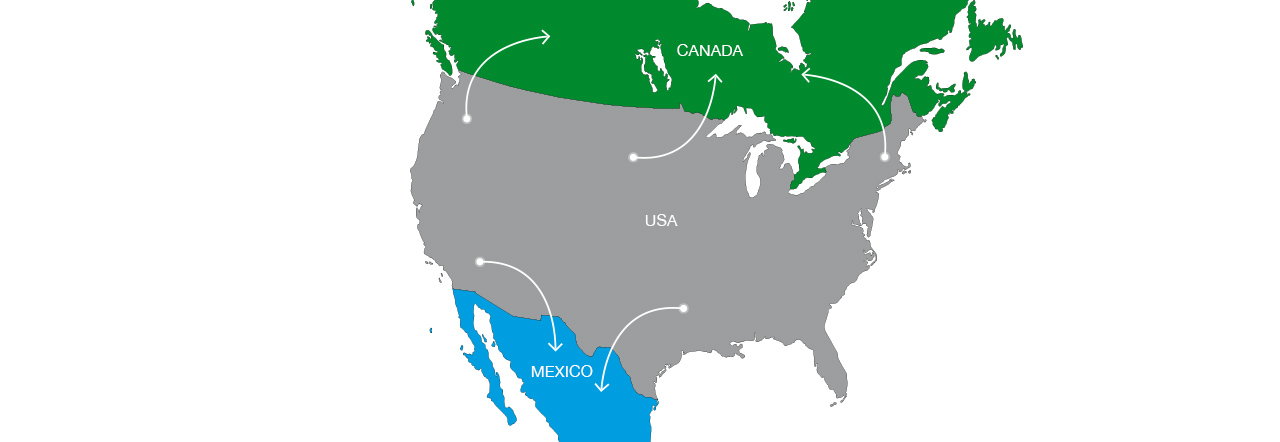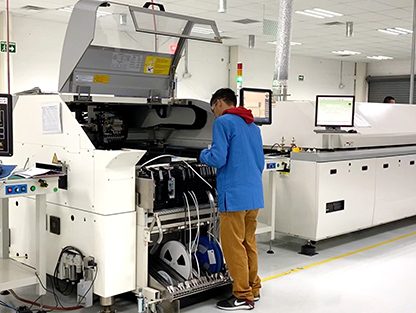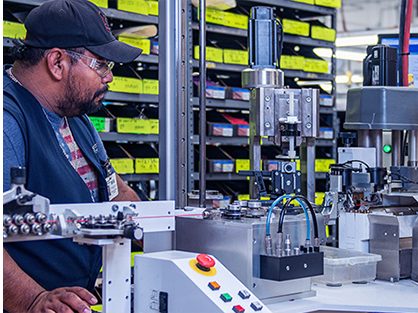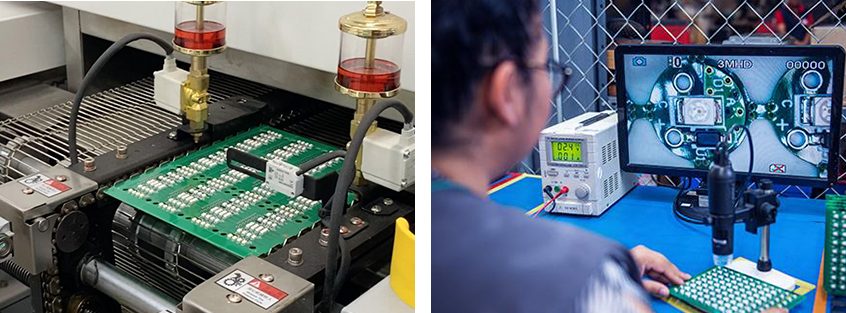Nearshoring FAQs
Common Questions About Nearshore ManufacturingNearshoring Manufacturing: Frequently Asked Questions
Discover the key differences between nearshoring and outsourcing to help make more informed supply chain decisions
Core Capabilities
If you need additional information on the benefits of manufacturing products closer to home, check out our blog post, “5 Ways to Reduce Supply Chain Risk with Nearshoring.” Of course, our team is always happy to assist you as well.
1. What is nearshoring manufacturing?
Nearshoring manufacturing, or nearshoring, is defined as outsourcing specific business processes or operations to companies to another country to reduce production and operating costs.
When the manufacturer is nearshore, it is located in a neighboring country — one that typically shares a border with the nation where the hiring company is headquartered.
Nearshoring provides companies with several benefits, such as:
- Streamlined supply chain
- Shorter lead times
- Eliminated communication delays due to time differences
- Reduced transportation and shipping costs, including tariffs
2. Offshoring vs. outsourcing — what’s the difference?
Often used interchangeably, offshoring and outsourcing aren’t quite the same things.
Offshoring is relocating certain business operations to another country in efforts to save on labor or other costs.
Outsourcing is transferring business activities to partners outside of the company — whether they are located in the same country or on the other side of the globe.
3. Nearshoring vs nearsourcing — what’s the difference?
Nearshoring is outsourcing business processes to countries that are in close proximity to the company’s headquarters or manufacturing operation. In many cases, both countries will share a border, which makes transporting products faster and more convenient.
For example, our components are manufactured in Mexico, and often shipped to our customer’s facility located in the same country. We help shorten the distance to the customer by both implementing nearshore manufacturing.
Efficiencies can also be attained when the nearshoring partner can create and assemble multiple electronic components, like PCB sub-assemblies under one roof — without having to ship the product to Supplier A, B, or C. Streamlining the supply chain can speed up development and delivery times while saving on shipping and other costs.
Similar to nearshoring, nearsourcing is strategically positioning certain operations in close proximity to where the final product will be sold or used. For example, a U.S. cable conglomerate could establish a call center in Canada instead of Asia, keeping service reps closer to its customers.
4. What’s the difference between insourcing and reshoring?
Insourcing and reshoring are similar in that they both involve the company itself doing the manufacturing.
Reshoring is the process of moving a company’s overseas/offshore manufacturing back to the same country where the organization is headquartered. An easy way to remember it is this: reshoring = returning home for manufacturing operations.
Similarly, insourcing is keeping manufacturing or other processes in-house. This doesn’t mean my specific location, just within the walls of the company instead of with an external partner or vendor.
5. How does talent availability come into play with nearshoring and outsourcing?
In the past, outsourcing operations to save on labor and other costs became a balancing act to find the right trade skills and talent when looking at nearshore manufacturing partners.
However, Mexico has made significant investments in its education and training incentives to help the workforce remain competitive in an ever-changing, technology-driven marketplace.
The country has over 2,500 higher education institutions, some of which are partnering with companies in other countries for research and design projects. With more than 3.8 million students enrolled in higher education in 2018, Mexico is solidifying its role as a manufacturing hub with ample highly skilled workers.
With more than 110,000 engineers graduating every year, it’s no surprise high-tech companies turn to the country for the production of everything from automotive and electronics to medical devices.
6. What are the tariff-related benefits to nearshoring?
For example, the recent trade war between the U.S. and China has caused a sharp rise in tariffs on goods being imported from the Asian country. Currently, the tariffs are at 19.1% — a rate more than 6 times higher than pre-trade war operations.
Alternatively, when companies use manufacturers with friendlier trade agreements in place with the United States, they can eliminate these steep swings in operation costs that must either be absorbed or passed to customers.
VCC’s manufacturing operations are located in Mexico, allowing our customers to take advantage of tariff-free trade and reduced production costs. To learn more about the benefits of nearshoring, read “5 Ways to Reduce Supply Chain Risk with Nearshoring.”
7. What is turnkey PCB assembly?
When you hear the term turnkey, you probably think of something that is ready to go immediately. However, in the electronic component landscape, turnkey PCB assembly is where your PCB manufacturer handles everything associated with the production of your assembly, including:
- Design & PCB layout
- BOM and supply procurement
- PCB manufacturing
- Schematic design
- Prototyping and testing
- Automated and manual assembly
- Additional connectors (add-on)
VCC’s turnkey PCB assembly services deliver a more streamlined and cost-effective production process, as well as shorter lead and delivery times. Learn more about our custom PCB capabilities here, or check out the “PCB Assembly Design Guide.”
8. What capabilities and services are offered?
- Automated Solder Paste Application
- Automated Pick and Place Machines
- 8-Zone SMT Solder Reflow Ovens
- Automated Optical Inspection (AOI)
- Through-Hole Assembly
- Wave and Soldering Machine
- Conformal Coating Equipment
- X-RAY PCBA Equipment Capabilities
- Leaded and Lead-Free Assembly
- Cable Assembly Services





